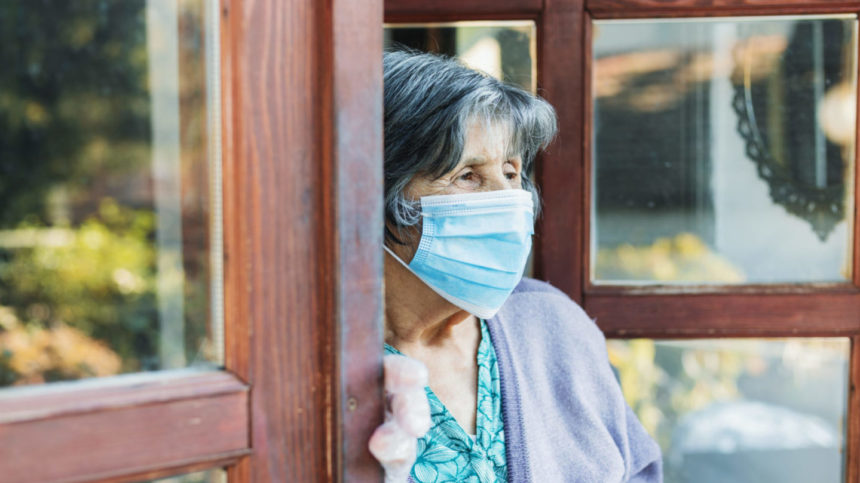
The Centers for Disease Control and Prevention has revised its public indoor mask guidance, using local hospital capacity and COVID-19 cases rather than transmission rates to decide risk levels.
According to the new metrics, 37% of U.S. counties have a high community COVID-19 rate, and public indoor masking is recommended in these areas, CDC Director Rochelle Walensky, M.D., said in a Friday press briefing. In contrast, 95% of U.S. counties would be considered to be at high risk based on the older metric of community transmission rates, according to Reuters.
Where risk is high, the CDC’s recommendation is that everyone wear masks in indoor settings. Where the risk is medium (39% of counties), people at higher risk for severe COVID-19 infection, such as the elderly and immunocompromised, “may choose to wear a mask” and should consult their physician about taking additional precautions, according to CDC officials. Low risk levels translate to low amounts of severe disease in the community and limited impact on the healthcare system. In low-risk counties, people can take a break from mask wearing and other mitigation measures, Walensky said.
The new metrics for calculating risk will help direct federal and state efforts toward better protecting people at high risk for severe illness and preventing COVID-19 from overwhelming hospitals and healthcare systems, she said.
Guidance unchanged for healthcare settings
As of Friday, and despite the new metrics, there was no change to the CDC’s mask recommendations for healthcare settings, a CDC spokesperson told McKnight’s.
At least one organization representing long-term care providers is urging the agency to revisit COVID-19 protocols for nursing homes.
“News from the CDC today that our country has entered a new phase of the pandemic is certainly positive,” said Katie Smith Sloan, president and CEO of LeadingAge, in a statement Friday. “While a shift toward pre-pandemic life is exciting, we remind America that a return to “normal” is important for older adults living in long-term care, too. These communities are home to millions of residents who deserve parity with the rest of the country. We urge the Centers for Disease Control and Prevention and The Centers for Medicare & Medicaid Services to move quickly in reassessing guidance for long term care settings. Do not leave long-term care residents behind.”
Throughout the pandemic, the onus has been on long-term care administrators to devise infection control protocol for visitors, vendors and others entering their facilities from the public sphere. The Centers for Medicare & Medicaid Services currently advises that clinical care providers use community transmission rates to make infection-control decisions under CDC’s healthcare setting guidance.
Updated measures of community transmission by county under the original red, yellow, orange, blue risk-ranking system remains accessible on the CDC’s website.
Where to find the new hospitalization metrics
A web page featuring the new COVID-19 community level basis for making decisions about public indoor masking and other infection mitigation measures was updated Friday. It uses an orange, green and yellow risk-ranking system.
The three metrics used to determine community levels include:
- New COVID-19 hospital admissions per 100,000 population in the past 7 days;
- The percent of staffed inpatient beds occupied by COVID-19 patients; and
- Total new COVID-19 cases per 100,000 population in the past 7 days
New COVID-19 hospital admissions and the percentage of occupied inpatient beds measure the current potential for strain on the health system. New cases data are an “early warning indicator” of potential strain on health systems during a COVID-19 surge, the CDC noted.
Americans’ reduced risk of severe COVID-19 helped turn the CDC’s focus to hospitalizations, Walensky said. A large number of Americans are vaccinated and U.S. immunity levels from prior infection are high. In addition, the U.S. now has more tools to protect itself against the virus such as vaccinations, broader access to testing, availability of high-quality masks, accessibility to new treatments and improved ventilation, she added.
“Our new framework was rigorously evaluated both with current data and retrospectively during the alpha, delta and omicron waves and these new metrics have demonstrated predictive capacity for weeks into the future,” Walensky said. “We will continue to evaluate how well they perform in our communities.”



